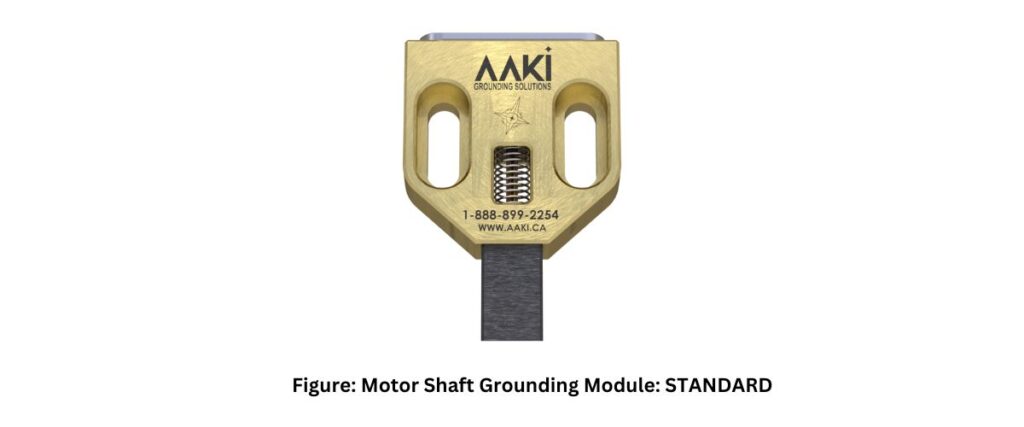Static Bonding and Grounding Reels: Essential Safety Tools
Static electricity may seem harmless, but in industrial environments it...
HVAC (Heating, Ventilation, and Air Conditioning) refers to systems that deliver heating and cooling for comfort in both commercial and residential properties. These systems use electric motors that respond to fluctuating heating and cooling requirements in buildings, including compressors, fans, and water pumps. The HVAC industry incorporates a wide range of businesses, from small family-run operations to larger corporations. This industry in the U.S. grew from just under 120,000 establishments in 2018 to almost 150,000 in 2023 [1]. Compared to electric motors that run at a constant speed, Variable Frequency Drives (VFDs) have become reliable and crucial for enhancing the efficiency and adaptability of HVAC systems. The global variable frequency drive market size is estimated at over 28 billion in 2024 and is projected to grow at almost 6% per year from 2025 to 2030 [2].
However, variable frequency drives (VFDs) may generate voltage surges that have the potential to damage motor bearings. High-frequency pulse width modulation (PWM) signals from VFDs can cause electrical discharges that pit motor bearings. By implementing preventive measures to protect HVAC motors, using motor shaft grounding modules can improve the functionality, reliability, and longevity of HVAC systems.
Aaki Corp.’s Motor Shaft Grounding Module (MSGM) provides a versatile, economical and reliable solution for managing shaft voltages caused by VFDs. Compatible with most motor configurations, they are ideal for a wide range of HVAC applications. These modules are available in two sizes, accommodating nearly any motor setup, ranging from fractional horsepower to several hundred HP. This module is designed to deliver enduring protection against harmful electrical currents.
This article explores the basics of protecting HVAC motors using VFDs, discusses motor shaft grounding modules and highlights the importance of shaft grounding to help you make informed decisions for your applications.
VFDs have gained huge popularity in the HVAC industry over the last two decades, offering several advantages over line powered methods. In various applications, they offer significant advantages, such as:
High-frequency voltage fluctuations produced as a side effect of a VFD’s operation have the potential to couple to the shaft via the motor’s internal capacitance, building up a shaft voltage. This shaft voltage may pass through the bearing elements if the bearings are not protected, causing electrical arcing and bearing surface damage. Shaft grounding in HVAC motors is essential to protect motor bearings. A dedicated device connects the rotating shaft to the motor frame, allowing circulating currents to bypass the bearings and flow directly to ground.

Aaki’s Motor Shaft Grounding Module (MSGM) delivers a robust grounding solution that safeguards electric motor bearings from harmful shaft voltages. Key features are:
Dimensions: 36mm x 42mm x 10mm (approx. 1.42 inches x 1.65 inches x 0.39 inches)
Brush Surface Area: 70mm2
Current: 10 Amp continuous current carrying capacity.
Range: Slotted screw holes for a wide adjustment range.
Compatibility: Compatible with motor models up to 100s of HP.

HVAC motors are crucial because they power the fans and compressors within heating, ventilation, and air conditioning systems, essentially enabling the circulation of conditioned air throughout a building. They maintain comfortable temperature and humidity levels while ensuring proper air quality and are the driving force behind a functional HVAC system. There is a huge application of HVAC motors in different areas, such as:
Shaft grounding devices are a critical component of HVAC motors, helping to ensure dependable operation and prevent premature bearing failure. It’s important to understand the various kinds of shaft grounding devices, their advantages, and the right procedures for installation and upkeep. Through the implementation of efficient shaft grounding solutions, industries can improve the HVAC motor’s longevity and dependability. When driven by VFDs, HVAC motors should employ some form of motor shaft grounding to increase reliability, increase efficiency, and lower maintenance costs.
Aaki’s Motor Shaft Grounding Module (MSGM) offers a robust solution for preventing shaft voltage-related damage, ensuring reliable HVAC motor operation with reducing maintenance requirements. With features like simplified installation and Brush Life Window™ Technology, Aaki MSGMs are an ideal choice for safeguarding of HVAC motors.
Contact Aaki today to learn more about how MSGMs can protect your HVAC motors and optimize your operations.

Static electricity may seem harmless, but in industrial environments it...
Quality Electric Motor Rebuilders (QEMR), based in Barrie Ontario, Canada,...
HVAC (Heating, Ventilation, and Air Conditioning) refers to systems that...

Be First To Find Out About Our News And Promotions.
Copywrite © 2025 Aaki Corp. All rights reserved.